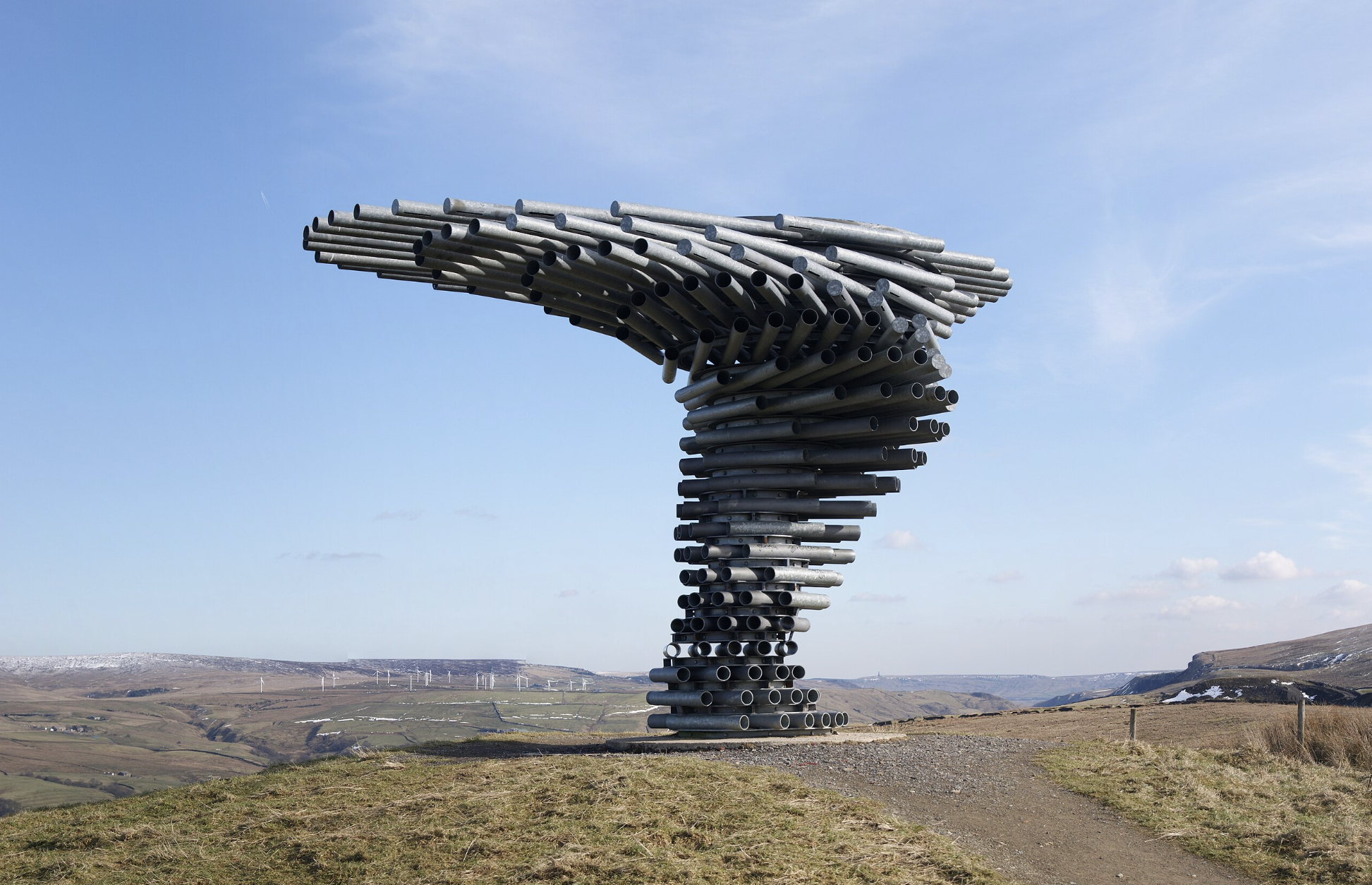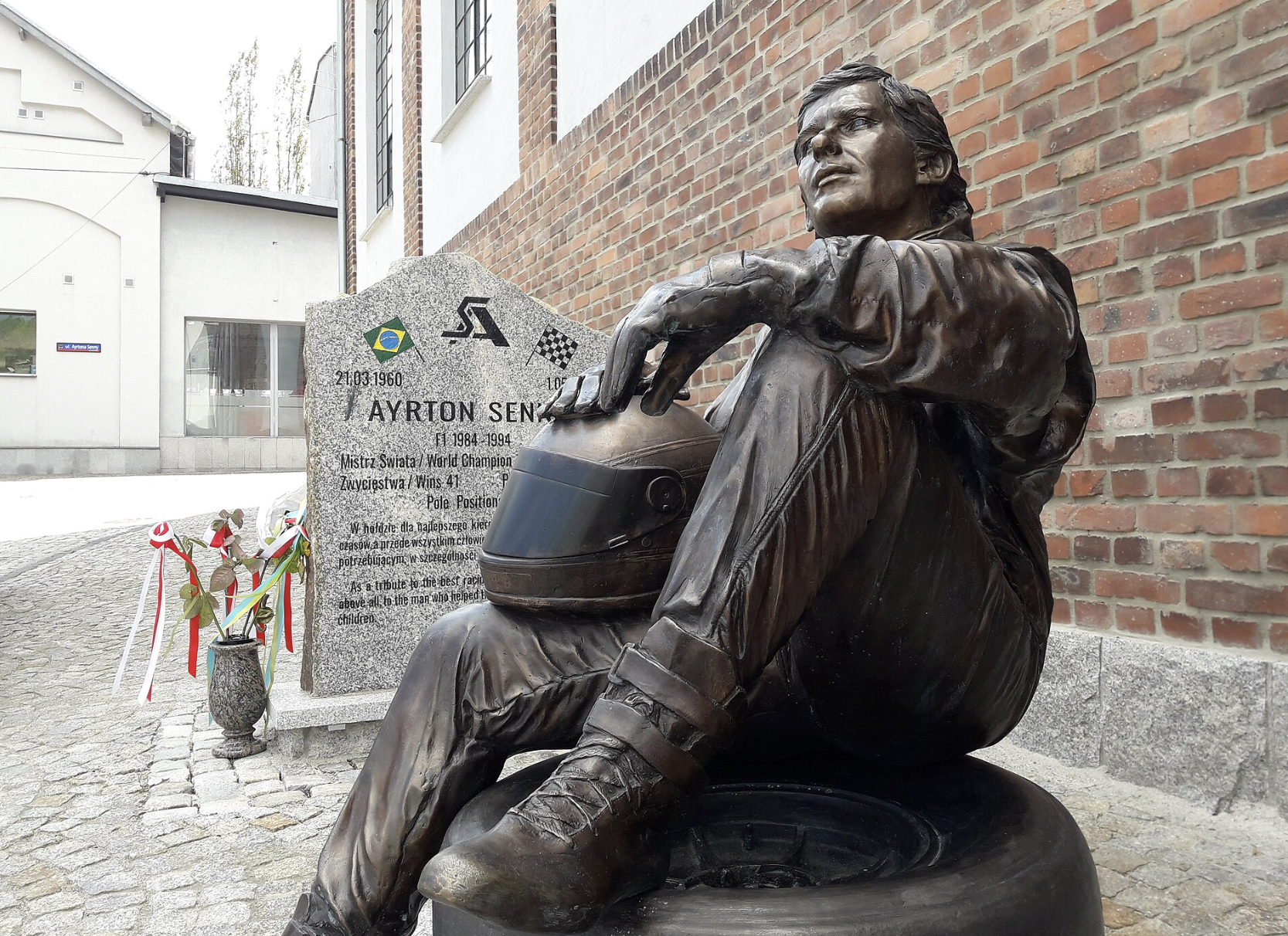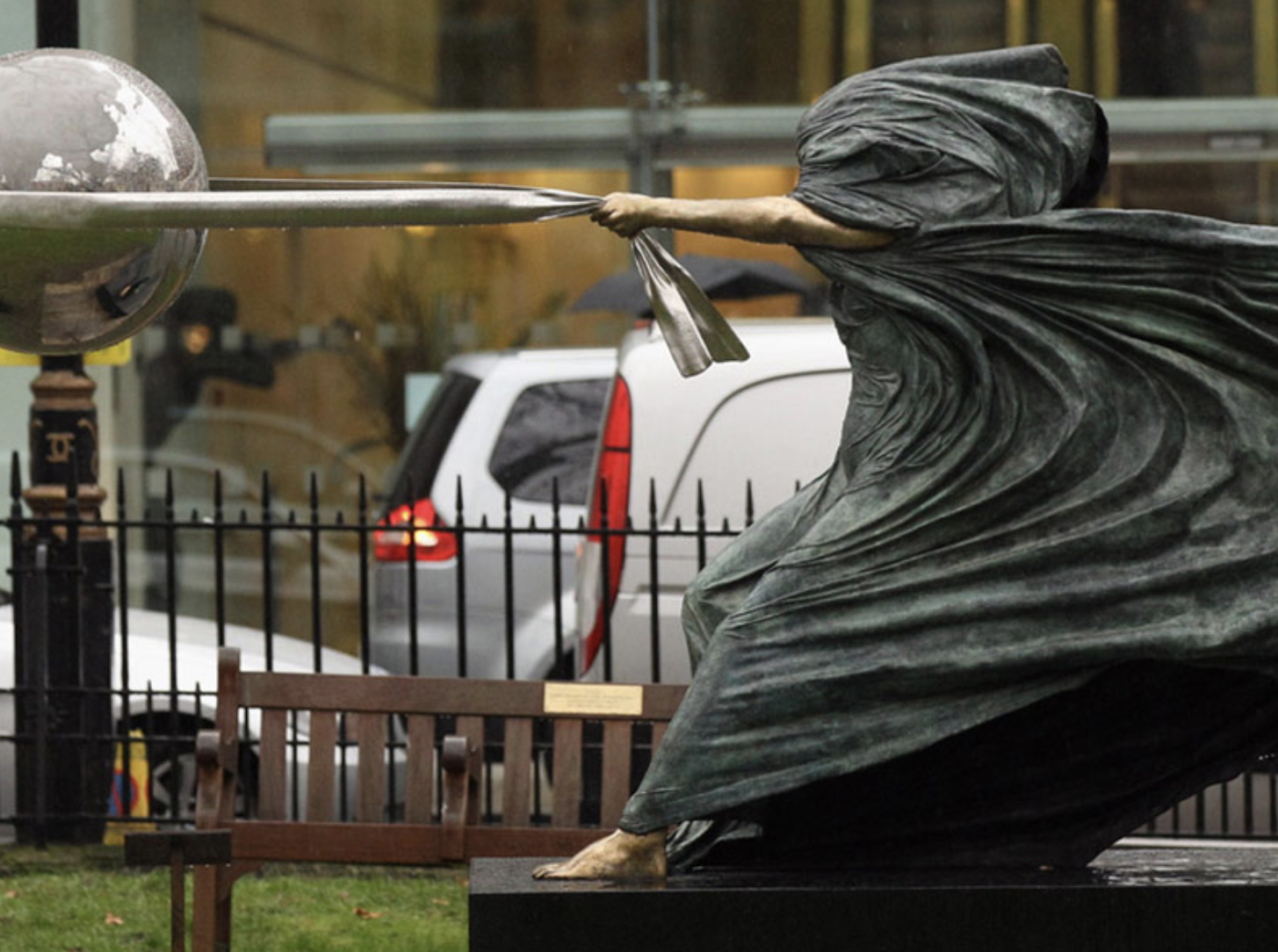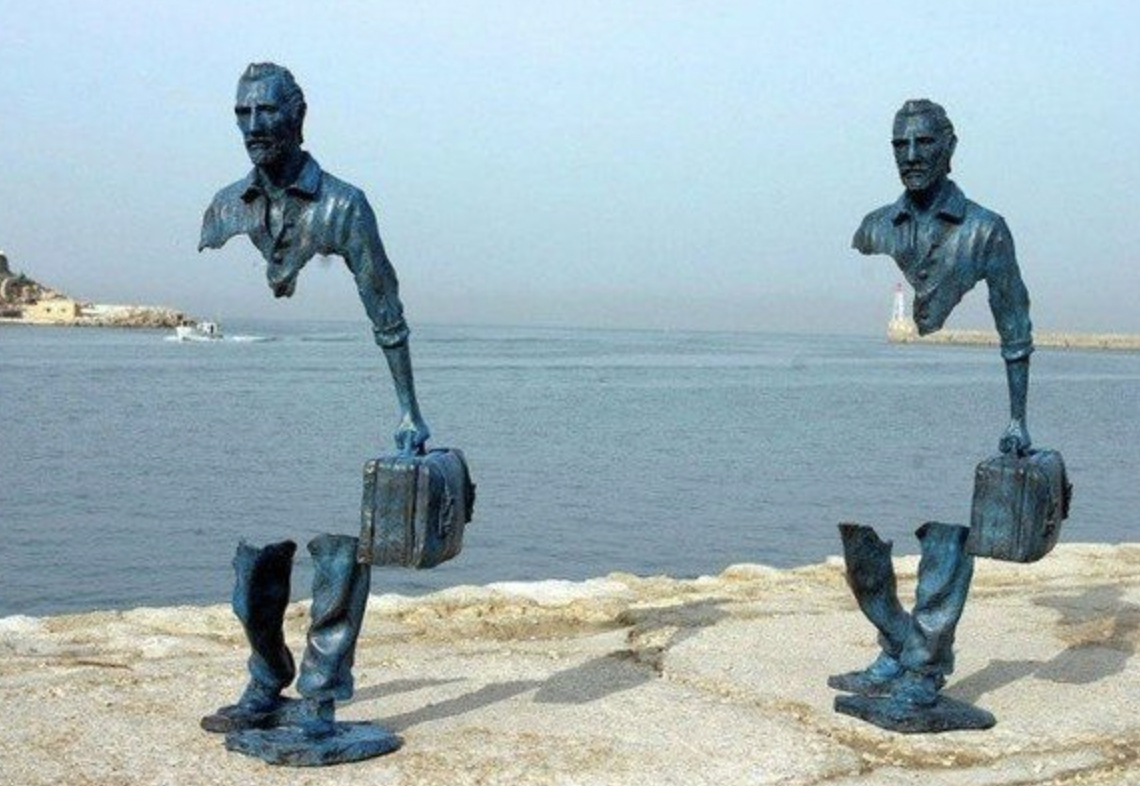Public Sculptures

Public sculpture is a form of artistic expression placed in open, accessible spaces, such as streets, parks, plazas, campuses, and civic buildings, intended for everyone. Meant to interact with everyday life, they exist outside institutional walls, where people pass by, gather, or pause. Public sculptures are designed not just to be seen but to be lived with.
Public sculptures serve multiple roles depending on their type and setting. Monumental statues might commemorate historical events or figures, acting as markers of collective memory. Abstract or conceptual pieces challenge perceptions, provoke conversation, or add aesthetic depth to urban environments. Interactive or kinetic works may invite touch or participation, engaging viewers more directly.
The materials and techniques used in public sculpture vary widely, depending on the artist’s vision and the demands of the environment. Bronze, stainless steel, stone, concrete, and wood are among the most common materials due to their durability. Sculptors may employ traditional techniques such as carving and casting, or contemporary methods like welding, 3D printing, and mixed-media assembly.
Commissioning a public sculpture often involves collaboration between artists, local governments, institutions, or private sponsors. The process may include community consultation, public competitions, or curatorial selection, ensuring that the final work resonates with the intended space and audience.
What is the Role of Public Sculpture in Urban Life?
Public sculptures play a crucial role in enhancing the quality of life in urban areas by enriching aesthetics, fostering community, and supporting various aspects of urban development. They contribute to a city’s unique identity, reflect community values, and can even drive economic growth and improve public safety.
Public sculptures serve as markers of collective memory. They preserve local history, commemorate significant events or figures, and provide space for reflection and shared storytelling. These works often give voice to underrepresented narratives and help foster a stronger sense of belonging.
Sculptures enliven public spaces. They introduce visual contrast, texture, and scale to otherwise uniform cityscapes, making streets, parks, and squares more dynamic and memorable. A single piece can transform an overlooked corner into a city icon or a mundane commute into a moment of visual discovery.
Public sculptures organize and activate urban space. They may serve as gathering points, guide circulation, or provide elements of interaction, such as touchable surfaces, sound components, or seating. In many cases, they serve as both infrastructure and art, merging utility with aesthetic value.
What Are the Types of Public Sculptures?
Public sculptures are broadly categorized into several types, including monumental and memorial sculptures, contemporary or abstract installations, interactive or functional sculptures, and environmental or site-responsive works. Each type serves different purposes and engages the public in unique ways, contributing to the cultural and spatial dynamics of public areas.
- Monumental & Memorial Sculptures: Commemorate historical figures or events, traditional and symbolic, found in civic or cultural landmarks.
- Contemporary or Abstract Installations: Modern, concept-driven works; often non-representational; designed to provoke thought and visual interest.
- Interactive or Functional Sculptures: Invite public engagement, often incorporating movement, sound, or utility features (e.g., benches, play elements).
- Environmental or Site-Responsive Works: Tailored to specific locations; integrate with surroundings; often emphasize spatial or ecological awareness.
Monumental & Memorial Sculptures
Monumental and memorial sculptures are created to mark significant historical events, honor influential figures, or reflect collective experiences of a community or nation. These works are often large-scale and figurative, depicting recognizable forms such as human figures, symbolic animals, or emblematic objects.
Designed to be both visually impressive and emotionally resonant, they serve as enduring markers of memory and meaning in public life. By representing shared values, struggles, or achievements, these sculptures contribute to shaping civic identity and fostering a sense of belonging.
You’ll commonly find them in prominent public spaces such as city squares, government plazas, parks, and in front of museums or institutions. Their placement reinforces their symbolic importance and ensures regular public engagement with the histories they preserve.
Contemporary or Abstract Installations
Contemporary or abstract public sculptures emphasize form, concept, and material rather than literal or figurative representation. These works often focus on visual language like shapes, textures, colors, and spatial relationships, inviting viewers to interpret their meaning individually.
Common materials include steel, glass, concrete, and various mixed media, allowing for experimentation and innovation in both structure and appearance. Artists working in this style often use industrial or unconventional materials to challenge traditional ideas of what public art should look like.
These installations play a vital role in provoking thought, sparking dialogue, or simply adding visual intrigue to urban settings. They may comment on social issues, explore abstract ideas, or exist purely for their aesthetic contribution. Regardless of intent, they encourage passersby to pause, reflect, and experience their surroundings in a new way.
Interactive or Functional Sculptures
Interactive or functional sculptures are designed not just to be viewed, but to be experienced. Their primary purpose is to invite physical engagement, whether by being touched, played with, walked through, or used in daily life.
These works often blur the line between art and utility. Examples include sculptural benches, artistic playground equipment, sound sculptures, or pieces with moving parts. They encourage people to explore, sit, climb, or even listen, turning public spaces into places of discovery and play.
By promoting direct interaction, these sculptures strengthen community engagement. They make art approachable and inclusive, especially for children and families, and help create shared experiences that bring people together. In doing so, they transform public areas into more lively, welcoming, and socially vibrant environments.
Environmental or Site-Responsive Works
Environmental or site-responsive sculptures are created in direct response to the specific characteristics of their surroundings, whether natural landscapes or built environments. These works are not simply placed into a space; they are shaped by it.
Their main functionality lies in their ability to integrate with the location’s topography, history, atmosphere, or ecological context. Artists often study the site carefully to design sculptures that reflect or enhance its identity, rather than disrupt it.
Unlike other public sculptures that can be relocated or stand independently, site-responsive works are deeply connected to the place they inhabit. They might incorporate local materials, reference indigenous flora or cultural symbols, or be designed to change with light, weather, or seasons.
These sculptures foster a quiet dialogue with nature or urban texture, encouraging visitors to reflect on the uniqueness of the place. By emphasizing connection over contrast, they deepen the relationship between people, art, and the environment, making the space itself an integral part of the artistic experience.
What are Common Sculpture Materials & Techniques?
Common sculpture materials include bronze, stone, marble, wood, steel, aluminum, glass, concrete, and plastic. Artists select materials based on their durability, appearance, and the intended interaction with the public and the environment.
Common materials include:
- Bronze. A classic material for monumental and memorial sculptures, known for its durability and ability to capture fine details, typically used in casting.
- Stone and Marble. Traditional choices for figurative works, especially in memorials. These are shaped using carving techniques and valued for their timeless quality.
- Wood. Used in smaller-scale or temporary installations, often in interactive or site-responsive works. Techniques include carving and assembly.
- Steel and Aluminum. Popular in contemporary and abstract sculptures for their strength and sleek finish. Commonly shaped by welding, cutting, or fabrication.
- Glass. Often found in conceptual or decorative installations, used for its translucency and ability to interact with light.
- Concrete. Used in functional or architectural sculptures, valued for its mass and moldability, often shaped through casting.
- Plastic and Composite Materials. Featured in interactive or playful works, particularly where color, flexibility, or cost-effectiveness is a factor.
Common techniques include:
- Casting. Pouring liquid material (like bronze or concrete) into molds to create solid forms. Ideal for both figurative and large-scale works.
- Carving. Subtracting material (stone, wood, marble) to shape the sculpture. Common in traditional and commemorative art.
- Welding. Joining metal components, widely used in industrial and abstract pieces.
- CNC Cutting. Computer-guided cutting is used for precision in metals, plastics, and wood. Common in modern geometric designs.
- 3D Printing. A growing technique for experimental and temporary sculptures, allowing rapid prototyping and complex forms.
Iconic Examples of Public Sculpture
Iconic examples of public sculpture around the world include the Singing Ringing Tree in Burnley, United Kingdom; the Ayrton Senna statue in Barcelona, Spain; the Ferrari statue in Imola, Italy; Force of Nature in London, United Kingdom; and Les Voyageurs in Marseille-Fos Port, France.
Each of these sculptures highlights a different approach to public art, ranging from commemorative monuments to conceptual installations, and demonstrates the power of sculpture to reflect cultural identity, provoke emotion, and shape public space.
Singing Ringing Tree in Burnley, United Kingdom

The Singing Ringing Tree is a unique sound sculpture located on Crown Point above Burnley in Lancashire, England. It was completed in 2006 and designed by Tonkin Liu, a British architectural firm renowned for integrating design, landscape, and engineering.
This sculpture, made of galvanized steel, stands approximately 3 meters tall. It consists of stacked and curved steel pipes, cut and arranged to resemble the shape of a wind-blown tree. Using industrial fabrication and assembly techniques, the pipes are carefully tuned to produce soft, melodic tones when wind passes through them.
Classified as an environmental and interactive sculpture, the Singing Ringing Tree integrates with its surroundings both visually and acoustically. It not only complements the natural landscape but also transforms wind into a subtle, ever-changing musical composition.
Commissioned as part of the East Lancashire Panopticons arts project, the sculpture was intended to enhance the region’s identity and attract visitors to the area. Over time, it has become a beloved landmark and a symbol of creative regeneration in Northern England.
Ayrton Senna in Barcelona, Spain 
The Ayrton Senna sculpture is a life-size bronze tribute to the legendary Brazilian Formula 1 driver, located at the Circuit de Barcelona-Catalunya in Montmeló, Spain. Unveiled in May 2019 to commemorate the 25th anniversary of Senna’s passing, the sculpture was created by British artist Paul Oz, with support from the Instituto Ayrton Senna.
Weighing approximately 160 kilograms, the sculpture captures Senna in a dynamic pose inspired by his driving style, particularly the movement he used when navigating the iconic Eau Rouge corner at the Spa-Francorchamps circuit. Oz employed advanced 3D scanning and printing technologies alongside traditional bronze casting techniques to achieve a high level of detail and realism.
This piece is categorized as a monumental and memorial sculpture, serving both as a tribute to Senna’s impact on motorsport and as an interactive element within the racing environment. Initially presented at the Palau Robert in Barcelona, the sculpture was later installed in the commercial area behind the main grandstand at the Circuit de Barcelona-Catalunya, where it remains a focal point for fans and visitors.
The unveiling of the sculpture was part of a broader set of commemorative activities during the 2019 Spanish Grand Prix, including a unique tribute involving a half-Brazilian, half-Austrian flag to honor both Senna and fellow driver Roland Ratzenberger. This gesture fulfilled Senna’s unfulfilled intention to pay homage to Ratzenberger, who had tragically died the day before Senna’s fatal accident in 1994.
Ferrari Statue in Imola, Italy

The Ferrari F40 Monument, officially titled Rampante, is a distinctive public sculpture located at the entrance of the Autodromo Internazionale Enzo e Dino Ferrari in Imola, Italy. Unveiled in 1999, the artwork was created by French-American artist Arman (Armand Pierre Fernandez), renowned for his “accumulation” style.
Standing approximately 5 meters tall, Rampante is composed of stacked bronze replicas of Ferrari F40 models, forming a dynamic vertical assemblage. The sculpture was painted using Ferrari’s signature red, provided by the company itself. This piece is categorized as a monumental and commemorative sculpture, celebrating the legacy of Ferrari and its iconic F40 model.
Commissioned by the Municipality of Imola in collaboration with Franco Calarota, chairman of Maggiore g.a.m., the monument was inaugurated with notable figures such as Jean Todt, Luca di Montezemolo, and Piero Ferrari in attendance. Its unveiling coincided with the 1999 San Marino Grand Prix, where Michael Schumacher secured a victory for Ferrari.
Over the years, the sculpture has become a symbolic landmark for motorsport enthusiasts and Ferrari fans visiting the Imola circuit. In 2022, recognizing the effects of time and weather, restoration efforts were initiated to preserve the monument’s condition and significance.
Force of Nature in London, United Kingdom

Force of Nature II is a compelling public sculpture by Italian artist Lorenzo Quinn, prominently displayed in Berkeley Square, London. Installed in February 2011 as part of the Halcyon Gallery’s public sculpture trail, this piece exemplifies Quinn’s exploration of human emotion and the forces of nature.
Crafted from bronze, aluminium, and stainless steel, the sculpture stands approximately 3 meters tall. It portrays a dynamic female figure—representing Mother Nature—swinging the Earth in a circular motion, encapsulating the raw power and unpredictability of natural forces.
Quinn was inspired to create this piece after witnessing the devastation caused by natural disasters like the 2004 Indian Ocean tsunami and Hurricane Katrina. He aimed to symbolize humanity’s vulnerability and the illusion of control over nature, reminding viewers of the need for humility and respect towards the environment.
Force of Nature II is categorized as a contemporary and conceptual sculpture, blending classical aesthetics with modern themes. Its presence in a bustling urban setting like Berkeley Square invites passersby to reflect on the delicate balance between humanity and the natural world.
Les Voyageurs in Marseille-Fos Port, France

Les Voyageurs (The Travelers) is a series of evocative bronze sculptures by French artist Bruno Catalano, installed along the waterfront of Marseille-Fos Port, France, in 2013. Commissioned to celebrate Marseille’s designation as the European Capital of Culture, the installation comprises ten life-size figures strategically placed throughout the port area.
Each sculpture portrays a solitary traveler carrying a suitcase, yet with substantial portions of their bodies conspicuously absent, creating a surreal visual effect. These missing sections are not merely aesthetic choices but serve as powerful metaphors for the feelings of loss, displacement, and fragmentation often associated with migration and travel.
Catalano, born in Morocco to a Sicilian family and later relocating to France, draws upon his personal experiences of migration and his time as a sailor to inform his work. The sculptures are crafted from bronze using traditional casting techniques, yet they challenge conventional forms through their deliberate omissions. The suitcases each figure carries serve a dual purpose: they symbolize the burdens of travel and also provide structural support, connecting the upper and lower segments of the fragmented bodies.
Categorized as contemporary and conceptual sculptures, Les Voyageurs engage viewers in a dialogue about identity, belonging, and the human condition. Their placement in a bustling port city underscores themes of departure and arrival, making them poignant landmarks for both locals and visitors.
Over time, these sculptures have transcended their initial installation, with versions displayed in cities worldwide, resonating universally with audiences and solidifying their status as iconic works of public art.
Interested in Commissioning a Public Sculpture?
Commissioning a public sculpture is a meaningful way to shape the visual and cultural identity of a space, whether it’s a city square, park, corporate plaza, or community hub. If you wish to commission public sculpture, working with a reputable agency like MTArt ensures the process is smooth, professional, and creatively impactful.
Why commission through MTArt?
- Expertise in public art: MTArt Agency specializes in placing high-quality art in public spaces, boasting a proven track record of successful projects in cities worldwide.
- Access to leading artists: The agency represents a curated selection of innovative contemporary artists who are experienced in creating works for public engagement.
- Full-service support: From concept development and artist selection to project management and installation, MTArt guides you through every step of the commissioning process.
- Compliance and logistics: MTArt ensures the artwork meets all necessary legal, environmental, and structural standards, handling permits, fabrication, and engineering as needed.
- Long-term impact: A well-commissioned sculpture can become a landmark, enhance community identity, and increase foot traffic and tourism.
Whether you’re a city official, developer, or private patron, commissioning a public sculpture through MTArt allows you to contribute lasting cultural value to your environment with the support of seasoned professionals.